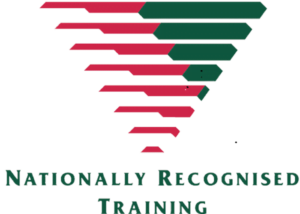Description
The Dogging Licence unit (CPCCLDG3001 – Licence to Perform Dogging) course is a comprehensive training program designed to equip participants with the necessary skills and knowledge to safely and effectively perform dogging operations in various industrial and construction settings. Dogging involves the use of slinging techniques to move, place, and secure loads using various types of equipment, such as cranes and hoists.
This course encompasses both theoretical instruction and hands-on practical training & assessments, ensuring that participants develop a deep understanding of dogging principles and gain practical experience in real-world scenarios. The curriculum covers essential topics, including:
- Legislation and Regulations: Understanding relevant workplace health and safety regulations, codes of practice, and standards that govern dogging operations.
- Risk Assessment: Identifying potential hazards associated with dogging operations and implementing risk management strategies to ensure the safety of personnel, equipment, and the work environment.
- Communication: Developing effective communication skills to facilitate coordination and collaboration between doggers, crane operators, and other team members.
- Equipment and Techniques: Learning about different types of lifting equipment, slinging techniques, and safe working loads for various materials and loads.
- Rigging and Slinging: Mastering the art of correctly selecting and attaching slings, chains, and other lifting gear to ensure load stability and balance during lifting and movement.
- Signals and Signaling: Acquiring proficiency in using standardised hand signals and communication methods to convey instructions between doggers and crane operators.
- Load Movement: Understanding load dynamics, control methods, and techniques for precise load positioning, placement, and movement.
- Practical Exercises: Engaging in hands-on exercises and simulated scenarios to apply theoretical knowledge, practice safe dogging techniques, and build confidence in real-world situations.
Our experienced and certified trainers leading this Dogging Licence course, ensuring participants receive quality instruction and mentorship throughout their learning journey. Whether you’re an aspiring dogging professional or seeking to enhance your existing skills, the CPCCLDG3001 course will empower you to contribute to safer and more efficient worksites within the construction and industrial sectors.
Outcome
Upon successful completion of the CPCCLDG3001 course, participants will receive a Statement of Attainment (SOA) and will be eligible to apply for a nationally recognized High-Risk Work (HRW) licence with the relevant state authoritory for dogging operations. This licence certifies their competence and authorisation to safely perform dogging tasks within the specified scope.
Duration
4 days
Pre-requisite Unit
Completion of the general construction induction training program, specified in the Safe Work Australia model Code of Practice: Construction Work, is required by anyone carrying out construction work. Achievement of CPCCWHS1001 Prepare to work safely in the construction industry meets this requirement.
Performance Evidence
To demonstrate competency in a Dogging Licence, a candidate must meet the elements and performance criteria by slinging and directing the movement of at least five loads of differing shapes, sizes and weights.
The loads must be moved by a slewing mobile crane of a maximum rated capacity of at least seven tonnes.
The candidate must:
- check relevant workplace information, including safe work method statements (SWMSs), and equipment service and maintenance records and checklists
- perform all activities in compliance with safe work practices and workplace-specific procedures and policies, and check, use, maintain and store equipment in compliance with manufacturer requirements
- identify hazards and use appropriate risk controls and safety measures and equipment
- determine load weight and travel path in consultation with crane operator
- select and inspect appropriate lifting gear and apply slinging techniques appropriate to the type of load, its mass and centre of gravity
- identify the working load limit (WLL) tags of the lifting equipment and gear and calculate the deration of the WLL resulting from the slinging techniques applied
- make temporary connections to loads using fibre or synthetic ropes
- use radio communication and hand and whistle signals to guide the crane operator, including when the load is out of sight of the crane operator.
The candidate must use the following bends and hitches when slinging and directing the movement of loads:
- single sheet bend
- clove hitch
- rolling hitch
- bowline.
Load types must include:
- stillage containing at least ten scaffolding standards or loose steel pipes of 200 kg or more
- ten loose steel pipes, of at least 2 m length, that need wrapping
- an uneven load of at least two tonnes requiring slinging
- steel plate of at least 1.5 m x 2 m x 25 mm
- a round load with a minimum diameter of 300 mm and minimum length of 3 m.
The candidate must direct each load through at least 180 degrees of the crane’s slewing radius.
Each of the following must be used at least once:
- flexible steel wire rope (FSWR) sling
- synthetic sling
- chain sling (including shortener)
- spreader bar or lifting beam
- tag line
- shackles
- eyebolts
- plate clamps.






Reviews
There are no reviews yet.